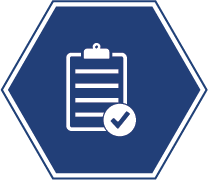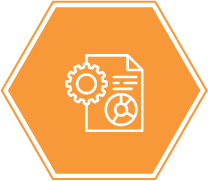
Why CSV Still Trips Up GxP Organizations
For life sciences companies—whether in pharmaceuticals, biotech, or medical devices—Computer System Validation (CSV) is not just a regulatory requirement. It’s essential to:
✅ Ensure patient safety
✅ Safeguard product quality
✅ Maintain data integrity
And yet, many organizations continue to struggle with effective CSV implementation.
Whether due to limited resources, lack of in-house expertise specially with Artificial Intelligence, or outdated processes, the result is often:
⚠️ Compliance gaps
⚠️ Audit findings
⚠️ Operational inefficiencies
⚠️ Risk to data reliability
This blog explores the most common CSV pitfalls and demonstrates how Ultragenic, with its deep domain expertise and purpose-built methodologies, can help close these gaps—ensuring clients remain productive, compliant, and inspection-ready.
Common CSV Gaps and How Ultragenic Bridges Them
With deep domain expertise and purpose-built methodologies, Ultragenic helps clients stay compliant, productive, and audit-ready—not just during go-live but across the system lifecycle.
| CSV Gaps in GxP-Regulated Environments | Ultragenic’s Solution Approach (Structured, Compliant, Scalable) | |
|---|---|---|
| 1 | No Risk-Based Validation Approach
| Risk-Based Validation Strategy
|
| 2 | Poor or Incomplete Documentation
| Comprehensive Documentation Control
|
| 3 | Inadequate Testing Practices
| Robust Testing Methodology
|
| 4 | Weak Data Integrity Controls
| Data Integrity by Design
|
| 5 | Lack of Periodic Review/Revalidation
| Lifecycle Revalidation Governance
|
| 6 | Ineffective Change Management
| Structured Change Control Framework
|
| 7 | Insufficient Training & Awareness
| Role-Based Training & Awareness
|
| 8 | Poor Vendor Oversight
| Vendor Qualification and Oversight
|
| 9 | Inadequate SOPs and Governance
| SOP & Responsibility Framework
|
| 10 | Unqualified Infrastructure
| Qualified Infrastructure Setup
|
| 11 | Seeking Validation Support for AI/ML | Establish AI/ML Readiness
|
Ultragenic’s End-to-End CSV Readiness Framework
At Ultragenic, we believe in laying a strong foundation before validation begins. Our CSV Readiness Framework ensures that every system implementation is context-aware, risk-informed, and audit-ready from Day One.
Here’s how we help clients prepare:
Identify GxP applicability and relevant regulatory compliance (21 CFR Part 11, GAMP 5, Annex 11)
Clarify system impact on product quality, safety, or compliance reporting.
Align IT, QA, business owners, and vendors for seamless execution.
Evaluate system criticality, novelty, and whether it’s COTS or custom-built.
Strategize deliverables, training, and SOP updates in advance.
The Ultragenic Impact: Compliance, Productivity, and Confidence
Our interventions do more than ensure compliance—they drive operational resilience. Here is what our clients typically achieve:
- 30–50% Reduction in Audit Observations
- Increased Inspection Readiness with Clean Documentation Trails
- Faster System Deployments and Go-Lives
- Improved Stakeholder Confidence Across IT, QA, and Regulatory
- Better Data Quality and Fewer Deviations
Whether you are implementing a new safety system, undergoing a digital transformation, or prepping for a regulatory inspection — reach out to us at contactus@ultragenicglobal.com to learn how Ultragenic can ensure you are not just compliant, but competitively prepared.












